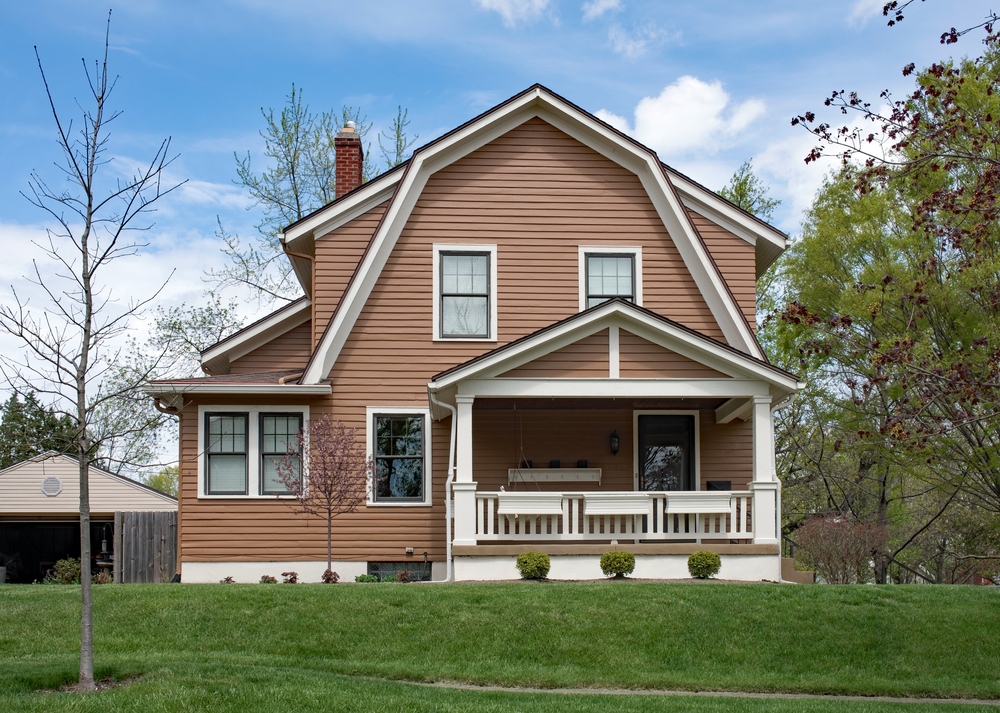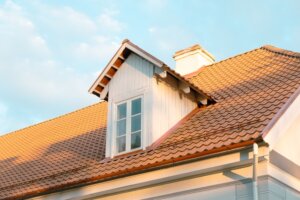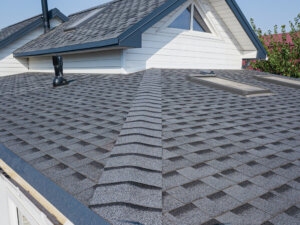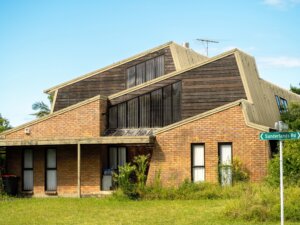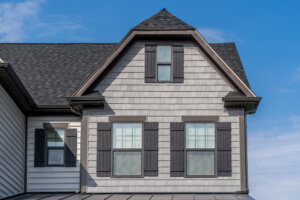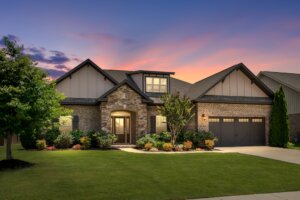New siding is an easy way to totally transform the look of your home without moving to a new one. Deciding on new siding for your home involves more than picking a colour and finding what looks good. While personal style will always sway your choice, key factors such as durability, environmental impact, and upkeep should be considered before you give the go ahead. We’ve looked at the 5 most common types of siding to help you find the right one for your home.
1. Stucco
A popular choice for homes due to its durability and relatively low-maintenance, stucco is traditionally found on Spanish style homes but can be applied to any style. Stucco is a popular choice because it can be directly applied to most other materials such as brick or concrete, and metal or wood frames.
Pros:
Due to its low maintenance, stucco siding requires little effort to keep it intact and should last a lifetime. You should avoid painting on top of existing stucco (due to high need for touch-ups, which negates choosing stucco in the first place), you can instead buy stucco in a variety of colours that will not require touch-ups. Stucco is also fire and insect-resistant which is always a plus.
Cons:
Traditionally stucco is made from building sand, Portland cement, lime and water. Production of Portland cement is linked to CO2 emissions, which is not great for the environment, however, there are new formulas which use earth and lime instead.
Advice:
Be sure to hire an experienced professional when installing stucco siding to your home. This is not a DIY material and requires a fair amount of prep work. Read reviews and get quotes from multiple companies to find the installer that’s right for the job and you feel comfortable with.
2. Vinyl
The most common installed exterior siding for homes in Canada due to its low cost, durability, and seemingly endless design options. Vinyl is even more low maintenance than stucco, as dirt can be washed off easily, and there’s no need for repainting or touch-ups. Vinyl is also less expensive than other siding options and most brands come with the option of warranties.
Pros:
Vinyl is very durable which means you can say good-bye to chips and scratches. Lightweight and easy to install, it comes in countless colours and textures. Vinyl is a good option when covering old and existing siding as it is quick and easy for pros to install.
Cons:
Vinyl is made out of a material known as polyvinyl chloride, or PVC, which is what makes it so durable. The downside to using this material is that the same material that makes it so strong means it can stay in landfills forever and never breakdown. PVC manufacturing also produces other toxins that are released into our air. While the vinyl siding on your home will last forever, the downside is that it could one day end up in a landfill and never be reused or repurposed.
Advice:
Standard vinyl panels are cut to be 12 feet long, this means that if your home is any bigger or smaller than that, you will have noticeable seams. If you’re inexperienced in siding installation, do not be tempted to install it yourself to save some money. Be sure to hire a pro who will know how to properly install these panels to avoid unsightly seams.
3. Wood
Wood siding is most commonly used for “premium” projects like cottages and cabins but is also found on many homes across Canada. Sought after for its natural beauty and the warmth it brings to a home, a wood sided home feels rustic and Canadian. While wood can be easily cut and stained to fit your personal taste, it does come with more maintenance and a higher price point than other options.
Pros:
If the environment is a concern of yours, then wood is a good option. With dedicated maintenance, wood siding can last for years and years. Another environmental bonus is that wood is a highly sustainable material and is easily broken down in landfills or can be reused for other projects.
Cons:
Wood requires the most maintenance out of all the siding options. If you want your wood to last, you will have to schedule in chalking, painting and staining by a pro. Wood is also susceptible to damage from weather, insects and other critters.
Advice:
While wood siding can be done by an experienced person, but it involves a fair amount of preparation and maintenance, all at an additional cost to you. If you are not willing to put in the time and effort to properly research the extensive maintenance, you may want to go with another option. You can always speak to a wood siding expert to find out more.
4. Fiber-Cement
New to the world of siding, fiber-cement has been gaining momentum and is becoming a popular choice for homes across Canada. Fiber-cement is another low maintenance option and is also environmentally friendly.
Pros:
Fiber-cement is made from a mix of wood pulp, cement, clay and sand. It can be made to look like wood, stucco or masonry, and can be easily painted and comes in many different designs and finishes. Due to the materials in its makeup, fiber-cement does not expand and contract, which is especially good news for our harsh and ever-changing Canadian climate. It is also fire and insect resistant, another bonus.
Cons:
There is the possibility of moisture and asbestos-related problems. Homes built before the 1980s could have siding that contains asbestos and requires a pro to remove it. Fiber-cement is still relatively new, so not much is known about its longevity.
Advice:
Fiber-cement siding is best installed by a pro due to its weight and special tools and techniques required for installation. All of this adds up to additional costs and labour. Be sure you hire a pro who has experience in installing fiber-cement as it is not the same as other siding options.
5. Synthetic Stone
While synthetic stone is not commonly used to cover an entire house, it is a popular choice when used as an accent. Synthetic stone is made from a mixture of cement, sand and aggregate which is poured into molds. Modern manufacturing techniques have come a long way and you can find realistic looking stones in almost any colour, shape and style.
Pros:
Synthetic stone is lighter and less expensive than natural stone, and comes in a wide variety of colours and designs. Maintenance is easy, most stones can be washed down with your garden hose. Synthetic stones are manufactured without impacting the environment and their production reduces the demand for real stone and cuts down on environmental disruption.
Cons:
While synthetic stone is less expensive than the real thing, it is still one of the more expensive siding options. It can also be difficult to add to existing siding, so be sure to consult with your pro before going ahead with it. Whether it looks real or not is up to how much you’re willing to spend and if you have a good eye for real stone.
Advice:
If you’re well experienced when it comes to installing siding, you’ll be happy to know it’s relatively easy to install yourself. If you do want to attempt a DIY, remember to do your research first. You do not want to start the project thinking you can do it yourself no problem and then realize you’re in too deep and have a home half covered in poorly installed stones. If you have concerns, it’s always best to hire a pro to take care of the job for you.
Now that you know what your options are, deciding on siding should come down to what you aesthetically like the most, what you can afford and what’s best for your home. If you need more guidance or are ready to start getting quotes, find a siding installation specialist on HomeStars.
